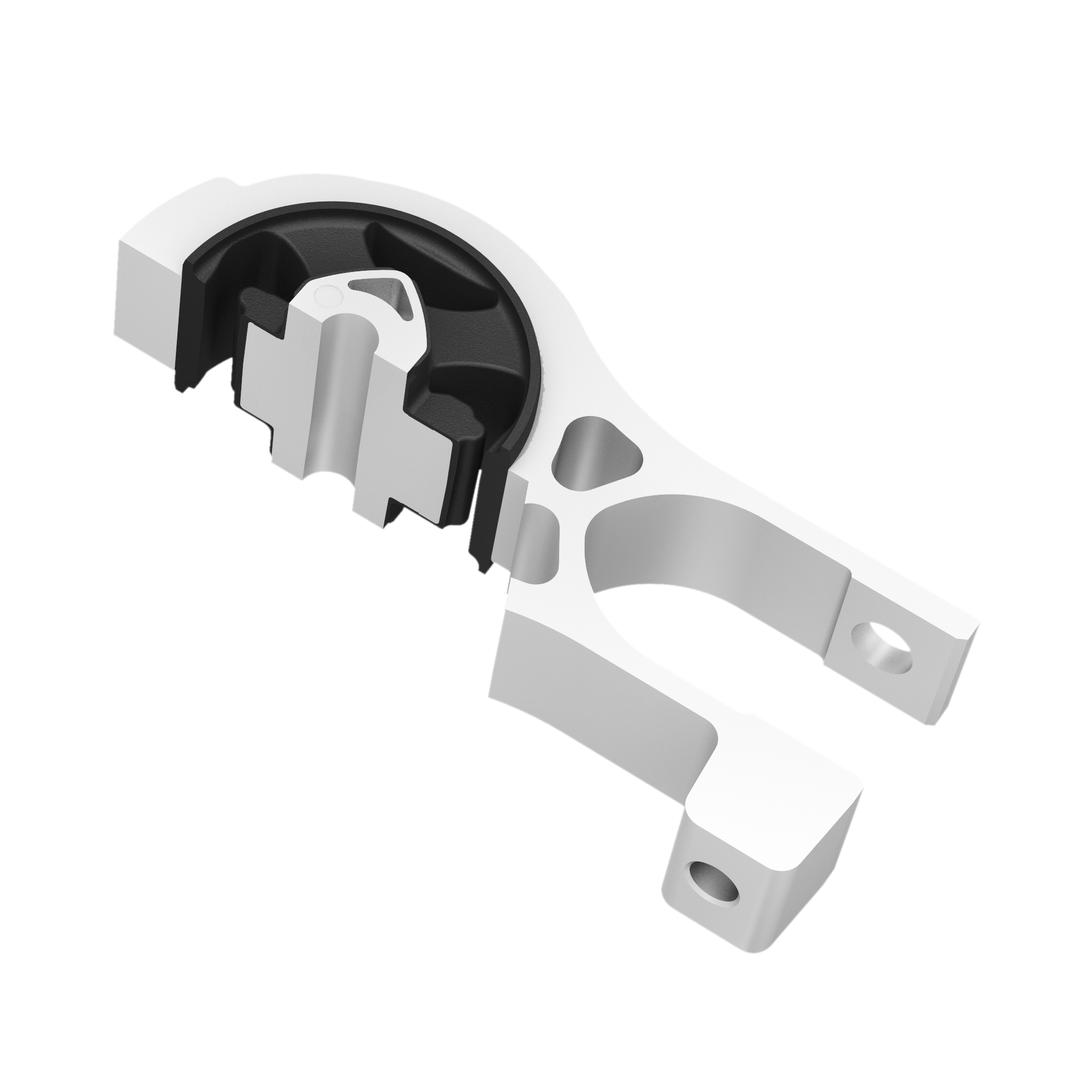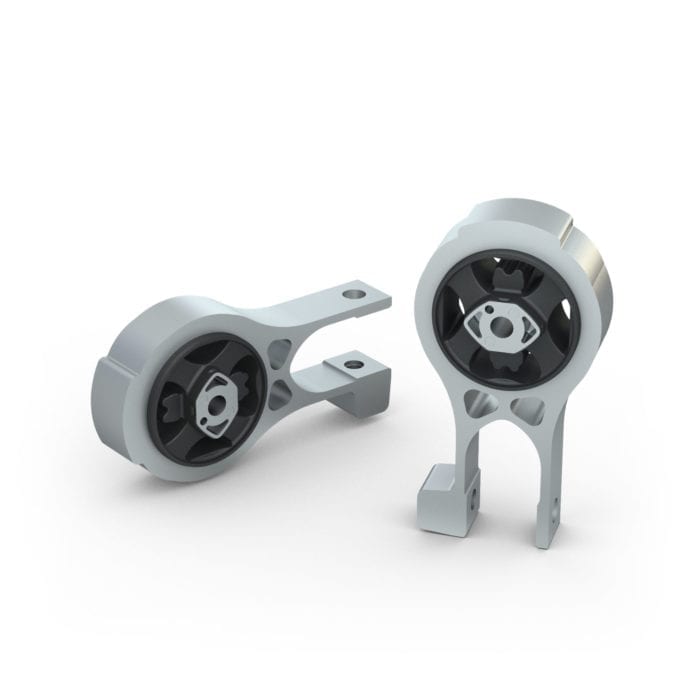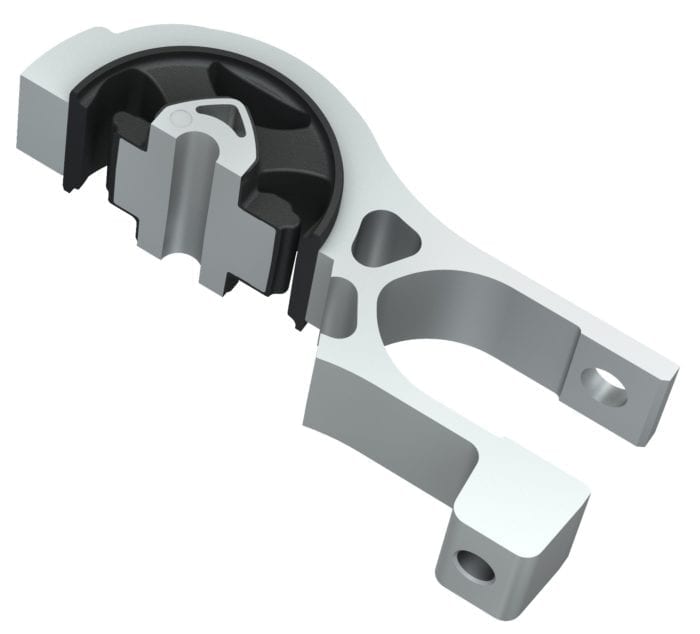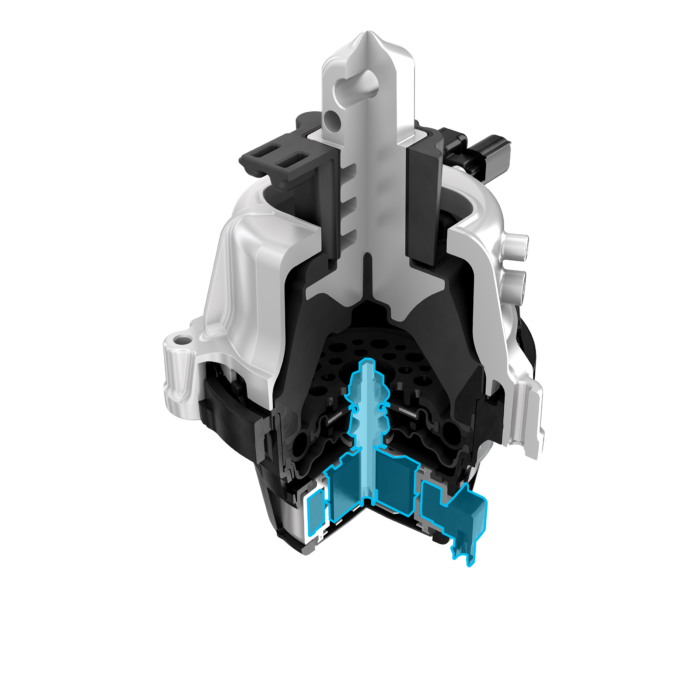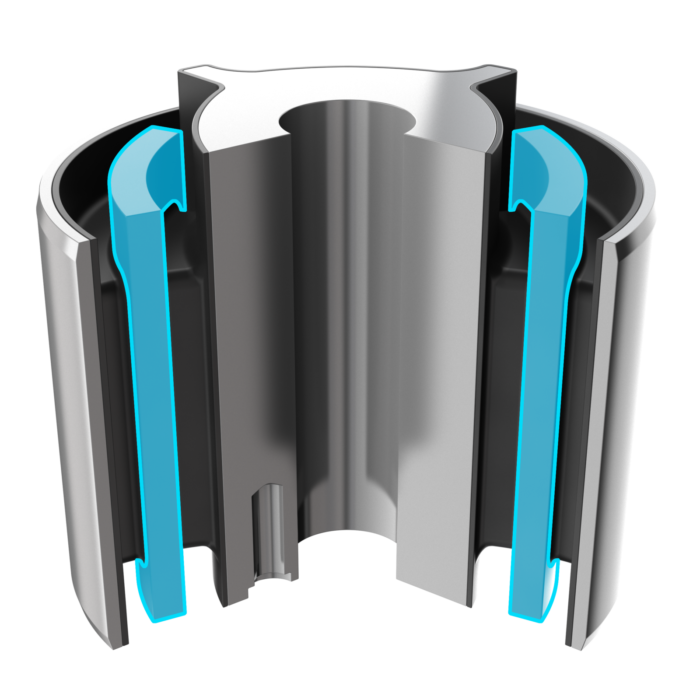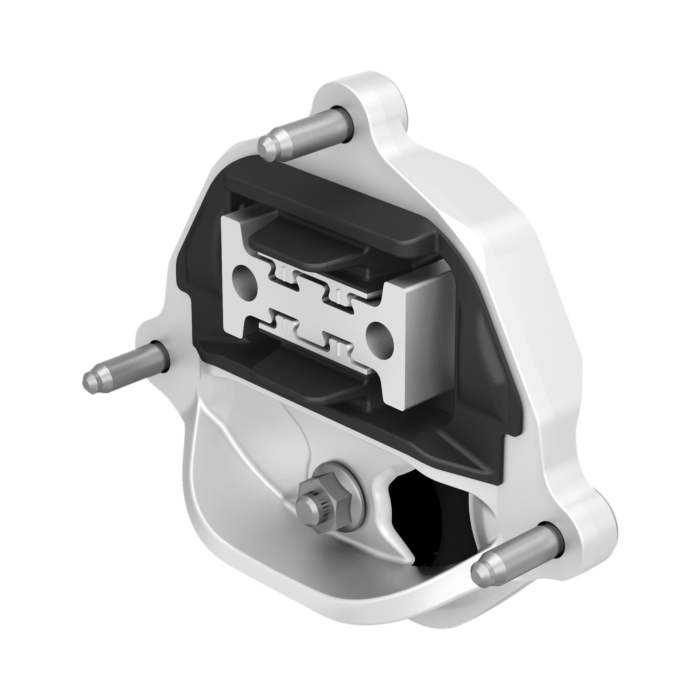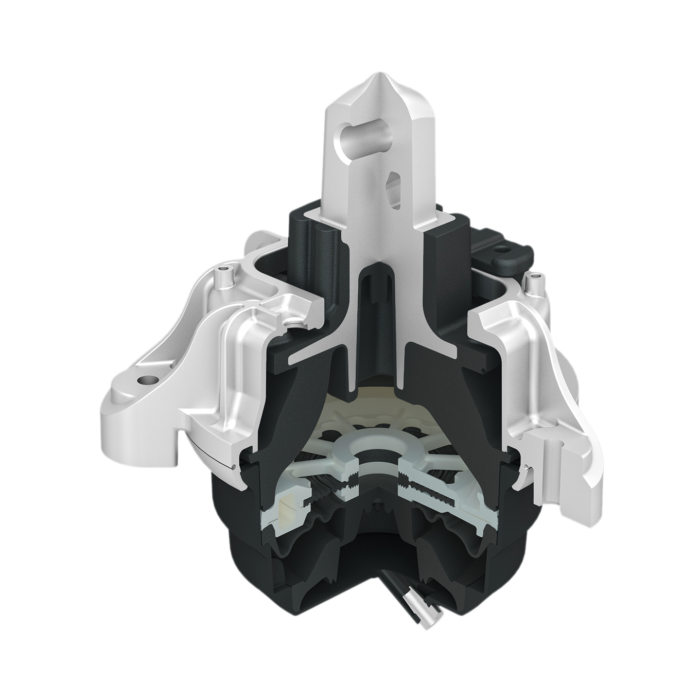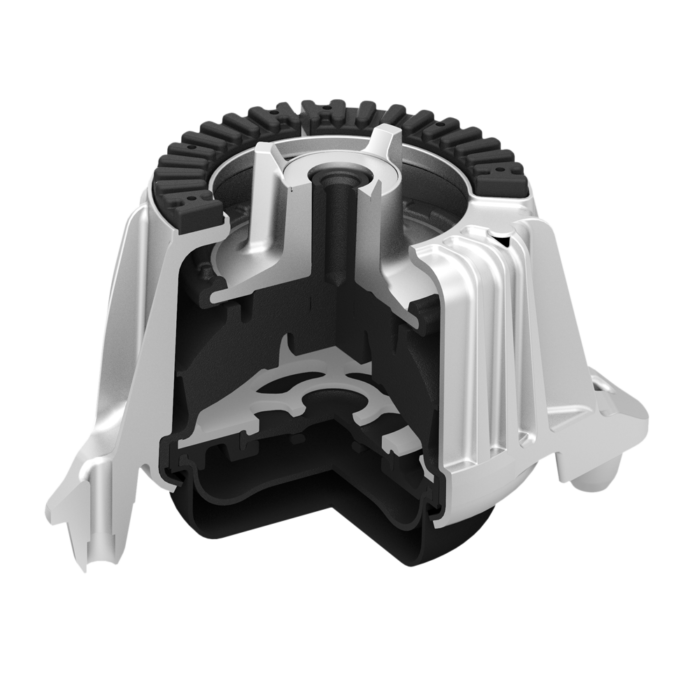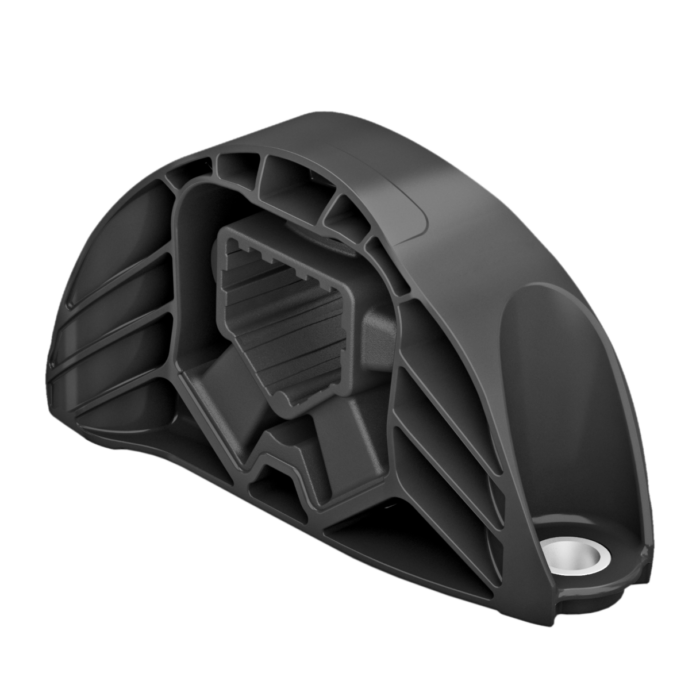Light Vehicle Products | Motor Mounts
Torque Rods
Prevent vibration and noise transfer, and restrict motor roll
Prevent vibration and noise transfer, and restrict motor roll
In addition to restricting motor roll, they prevent vibration and noise transfer from the motor block to the chassis. A specially designed and tuned balancer mass improves the high-frequency behavior of the torque rod and prevents interior noise “booming” when the torque rod resonance is excited by the motor. The application of lightweight aluminum can further improve cabin noise, weight and thus efficiency.
Torque rod solutions also need to address the new challenges presented by the increasing implementation of recuperation functions, in particular in hybrid vehicles, because here motor roll support is necessary in both directions.
About Motor Mounts
Motor mounts carry the static and dynamic loads of the motor throughout its entire service life and are also an important factor for isolating low to high frequency vibrations. Downsized and turbocharged motors are state-of-the-art to reduce fuel consumption but lead to high vibration levels.
more
Motor and transmission mounts consist of a motor or gearbox support arm, an isolation element and a body-side connecting element. The critical element is the rubber spring that dampens vibrations, supports drive torques and isolates noise during start-up. The motor mount prevents booming noises and load-change shocks. Vibrations of the body and drive train are improved by using a hydraulic damping system. Motor mounts effectively isolate motor vibrations and dampen road excitations to ensure a comfortable driving experience.
The product portfolio ranges from conventional rubber mounts and hydro motor mounts, through electrically or pneumatically switchable motor mounts, to gearbox mounts and torque rods.

